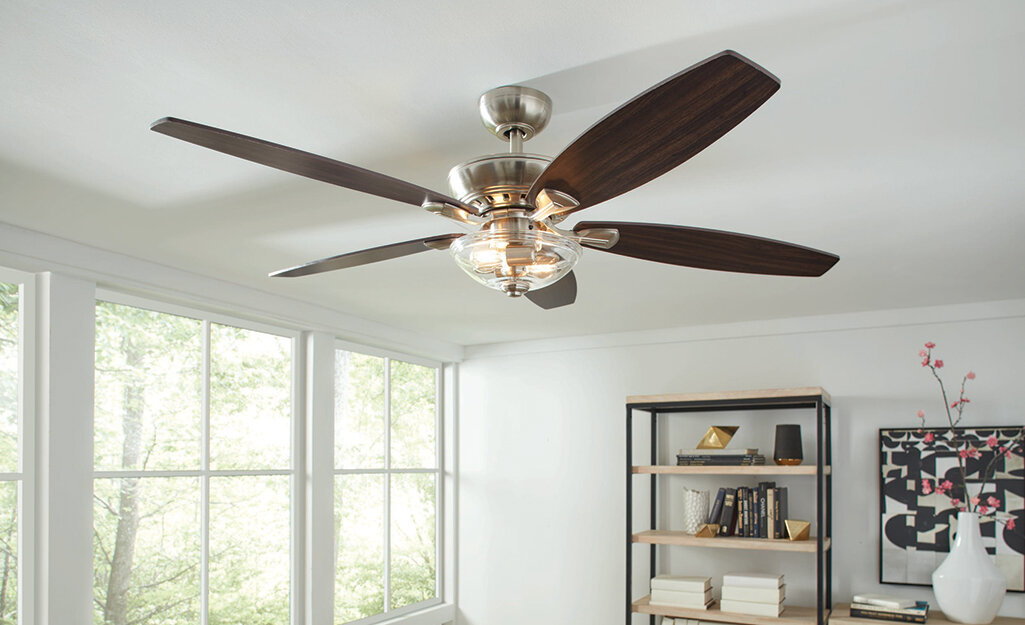Welcome to our blog post on the best ways to control and reduce echo in a large room! If you’ve ever been in a cavernous space that seemed to amplify every sound, you know just how frustrating it can be. Whether it’s for a conference room, a studio, or even your own home theater, finding effective solutions to tame that disruptive echo is crucial.
In this article, we’ll explore various methods and materials that can help you achieve optimal acoustics in your space. From sound-absorbing materials to sound-reflective options and everything in between, we’ve got you covered. So let’s dive right in and discover how to transform your echo-prone room into an oasis of clear and crisp audio! Get best ceiling fan for large room.
Control Echo with Sound-Absorbing Materials
One of the most effective ways to control and reduce echo in a large room is by using sound-absorbing materials. These materials work by absorbing sound waves rather than allowing them to bounce off hard surfaces, thereby minimizing the reverberation.
There are several options for sound-absorbing materials that you can consider. One popular choice is acoustic panels or foam tiles, which come in various sizes and shapes. These panels are designed specifically to absorb sound and can be installed on walls or ceilings.
Another option is acoustic curtains or drapes, which not only add a touch of elegance to your space but also help absorb unwanted echoes. These curtains are made with specially designed fabrics that have excellent sound absorption properties.
If you prefer a more subtle approach, you can opt for carpeting or rugs on the floor. The soft texture of these materials helps reduce echo by absorbing sound waves that would otherwise bounce off hard surfaces.
For those who want a DIY solution, bookshelves filled with books can act as natural sound absorbers. The pages of the books disrupt and scatter incoming sound waves, effectively reducing echo in the room.
By incorporating these various types of sound-absorbing materials into your space, you’ll significantly improve its acoustics and create an environment where clarity reigns supreme! So go ahead and explore the options available – your ears will thank you later!
Use Sound-Reflective Materials to Control Echo
When it comes to controlling echo in a large room, one effective strategy is to use sound-reflective materials. These materials are designed to bounce sound waves off their surfaces, reducing the amount of reverberation in the space.
One option for sound-reflective materials is acoustic panels or ceiling tiles made from reflective materials such as metal or glass. These panels can be strategically placed throughout the room to help redirect and scatter sound waves, minimizing echoes.
Another choice is using mirrors or other polished surfaces on walls or ceilings. Mirrors not only serve a functional purpose but also add an aesthetic appeal to the room while helping to control echo.
Additionally, consider incorporating hard flooring options like tile or hardwood which have reflective properties that can help break up sound waves and reduce echo.
By utilizing these sound-reflective materials, you can effectively manage and minimize echo in your large room without compromising its overall design and functionality. Remember that every space is unique, so it may require some experimentation with different combinations of sound-absorbing and reflective materials to achieve optimal results.
Use a Combination of Sound-Absorbing and Sound-Reflective Materials
To achieve optimal sound control in a large room, using a combination of sound-absorbing and sound-reflective materials can be highly effective. This approach allows for a balanced acoustic environment that minimizes echo while still maintaining some level of liveliness.
Sound-absorbing materials such as acoustic panels are essential to reduce the amount of reflected sound waves in the room. These panels are made from porous materials that absorb the sound energy, preventing it from bouncing back and causing echoes. Placing these panels strategically on walls, ceilings, or even as freestanding partitions can significantly improve the acoustics of the space.
On the other hand, incorporating sound-reflective materials like hardwood floors or glass surfaces can help add some degree of reverberation to prevent excessively deadening the room. These reflective surfaces allow for a controlled amount of reflection which helps preserve an enjoyable auditory experience without overwhelming echos.
The key is finding the right balance between absorption and reflection based on your specific needs and preferences. Experimenting with different combinations of materials and their placement within the room can yield excellent results.
Remember that every space is unique, so it may take some trial and error to find what works best for your large room. Consulting with an acoustic professional or hiring an interior designer experienced in managing echo issues could also provide valuable insights tailored to your specific situation.
By utilizing both sound-absorbing and sound-reflective materials strategically, you can create a harmonious sonic environment where echoes are controlled without sacrificing too much natural reverberation. So go ahead, explore various options available in today’s market to transform your large room into an acoustically pleasing haven!
Conclusion
Controlling and reducing echo in a large room is essential to create a comfortable and enjoyable environment. By implementing the right strategies, you can significantly improve the acoustics of your space. Whether it’s for a conference room, auditorium, or even a home theater, there are several effective ways to tackle echo.
One approach is to use sound-absorbing materials such as acoustic panels or foam. These materials help absorb sound waves rather than allowing them to bounce off hard surfaces, thus minimizing echo. Placing these panels strategically on walls and ceilings can make a noticeable difference in reducing reverberation.
On the other hand, using sound-reflective materials can also be useful in controlling echo. Surfaces like glass or polished wood can reflect sound waves away from certain areas, preventing excessive reverberation. Incorporating these materials into specific sections of the room where echoes are more prominent can help achieve better acoustic balance.
However, combining both sound-absorbing and sound-reflective materials often yields the best results. This allows you to strike an optimal balance between absorbing excess noise and maintaining some level of liveliness in the space.
Remember that each room has unique characteristics that may require different approaches for controlling echo effectively. It’s crucial to assess your specific circumstances before deciding which solution will work best for you.
In conclusion (without using “In conclusion”), understanding how to control and reduce echo in a large room involves utilizing appropriate techniques such as employing sound-absorbing or reflective materials – or even both – depending on your needs. By taking proactive steps towards optimizing acoustics within your space, you’ll create an environment that not only looks impressive but sounds amazing too! So go ahead and embark on this journey toward improved audio quality – your ears will thank you!





























